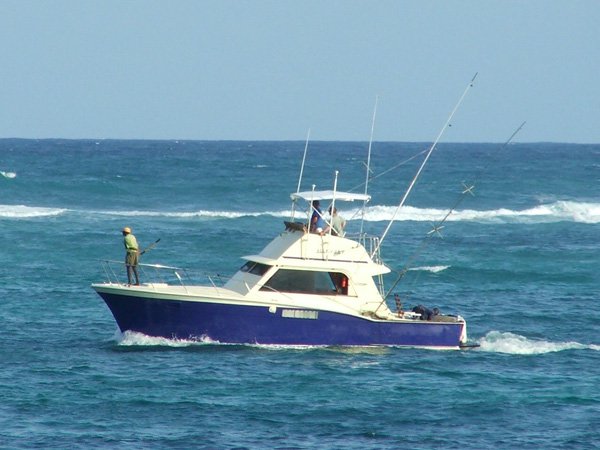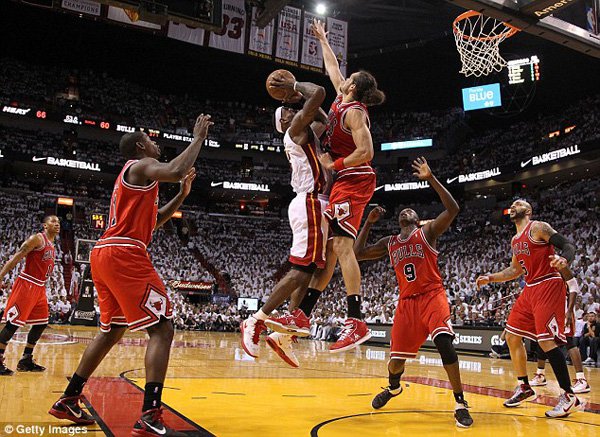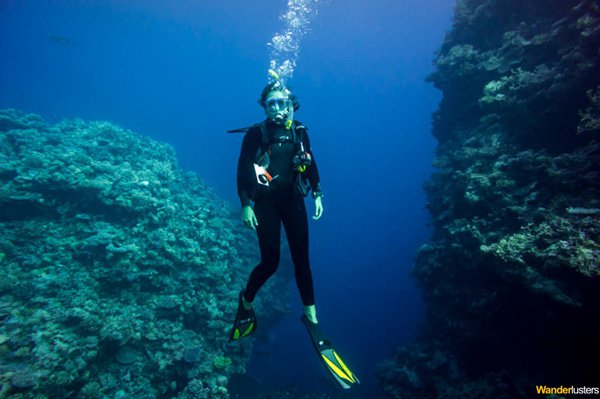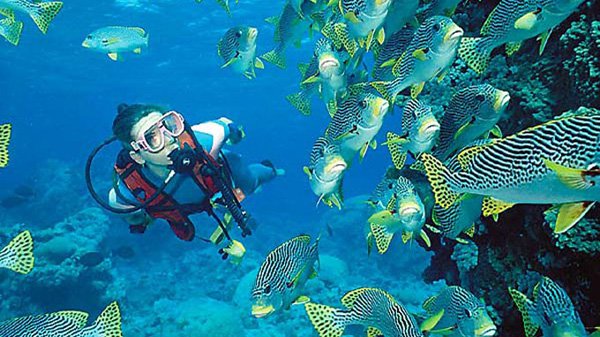
All lakes in the UK can be broken down and viewed in 3 distinct layers; this breaking down into layers is known as ‘lake stratification'.
The 3 different layers each have different temperatures; this difference in water temperatures is caused by a change in outside temperature which changes throughout the year.
The 3 layers are called the
1. Epilimnion – This is the top layer of water.
2. Metalimnion – The middle layer of water, this is a thin layer of water.
3. Hypolimnion – The bottom layer of water.
In the UK we function on 4 seasons and as a result a cyclical pattern of temperature change occurs every year.
It is important to know that lake water has a maximum density of about 4°C. This basically means that for some reason (that I am not going into here) water that is 4°C will weigh more than water at any other temperature and so will move to the bottom. To make this clear:
If there were only 2 temperatures of water in a lake of 4°C and 18°C then the 4°C would be at the bottom of the lake and the 18°C would be at the top.
Equally, if there were only 2 temperatures of water in a lake of 4°C and 2°C then the 4°C would be at the bottom of the lake and the 2°C would be at the top.
From this we can see how different seasons (winter, spring, summer and autumn) will affect the stratification of the lake.
In the winter months the air temperature is very cold, there is less sunlight and therefore the temperature of water in the lake is lowered. The water at the bottom of the lake (hypolimnion) will be around 4°C. The water at the top (epilimnion) will be around 1°C. From our knowledge of carp fishing we know that as a general rule carp go to the warmer areas of the lake (for reasons I am not going into here). So in the winter months the carp will tend to be near the bottom where the water is warmest. Unfortunately, with 4°C being the maximum temperature anywhere in the lake the carp's metabolism slows right down and so the need for food is reduced and the need to conserve energy (less movement) is increased. This is one reason why carp fishing in the winter is more challenging.
It is as spring arrives that a massive change happens. The outside temperature increases due to there being more sunlight hitting the UK for longer periods of time. This begins to warm the temperature of the water. This gives rise to our 1st dimictic cycle, the 2nd happens in the autumn. During this cycle the water warms gradually until the entire lake is of the same temperature from top to bottom. Due to this same temperature, the lake water now beings to mix from top to bottom. If you want to know exactly when this is happening, take a thermometer with you in your bag and put it a few inches into the water to get the temperature. Over the days it will gradually get closer and closer to 4°C until the mixing happens.
From this point the water starts to increase in temperature past 4°C and so the mixing stops. As you know from reading this far, water at 4°C is the heaviest anywhere in the lake and as a result all water at 4°C moves to the bottom layer and becomes the hypolimniom. This happens much quicker in shallow water as the suns rays can hit the bottom of the lake. This often encourages the fish into the shallow water at this time; as the angler it is to your advantage to know when this is happening.
This process of heating the water will continue through into the summer and as a result fish can now be seen feeding on the lake surface where the temperature is very high. But what about the thin metalimnion or middle layer? Knowledge of this is vital to an angler. Only when the water is not in its mixing stage will there be a thin middle layer of water. This thin layer separates the top layer from the bottom and is actually at a higher temperature to the water anywhere else in the lake, because it changes the quickest.
So during the spring months into early summer is this the warmest part of the lake...? Yes!
This layer may be known as the ‘thermocline'. The thermocline layer will be at different depths depending on the depth of the water you are fishing in. A thermocline in 6ft of water will be at a different level to a thermocline in 20ft of water. Your task as the angler would naturally be to locate where this thermocline is and through different techniques, zig-rig, pellet waggler etc., find it. This can have dramatic effects on your fish catch rate during this period in the lakes natural cycle. It is important to note that in very shallow water all the water is classed as the top layer as the suns rays are so powerful that they heat that section of water equally; this makes fishing in these areas on the top and bottom very effective.
As the lake moves out of summer into the autumn the process is repeated with the 2nd dimictic cycle of water temperature gradually moving towards the temperature of the bottom layer. The bottom layer may now be at 11°C, though this will depend on how hot the summer months were. Again, when the water temperature is the same throughout the lake, the mixing phase will happen. Eventually the lake will return back to a lower temperature at the top with a slightly warmer temperature at the bottom as the winter months return.
Be at least aware that these changes happen, pay attention to where in the yearly cycle of stratification the lake you are fishing is likely to be and adjust your fishing approach as necessary to suit this.
This has hopefully helped your ‘watercraft' so apply it to your fishing and see what happens…
Learn Team Building At Houston Basketball Camps

Free Diving – The World of Adventures is Waiting for You

Divi Flamingo Bonaire Resort to Host Underwater Photography Event with Stephen Frink

Copyright © www.mycheapnfljerseys.com Outdoor sports All Rights Reserved